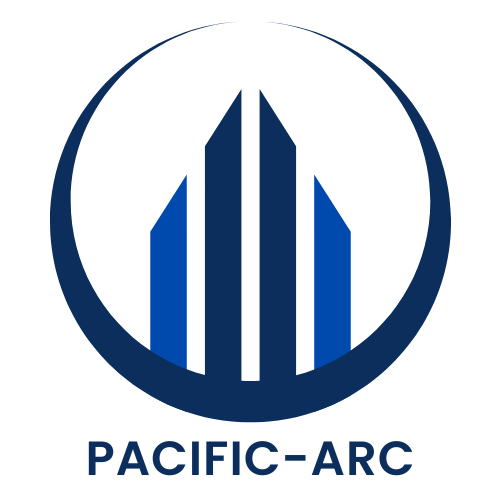Buying a home can feel like a Herculean task, especially when it comes to that pesky down payment. It’s like trying to find a unicorn in a haystack—rare and elusive. But what if there was a magical solution? Enter down payment grants, the fairy godmother of homeownership. These grants can help turn your dream of owning a home into a reality without emptying your wallet.
Table of Contents
ToggleUnderstanding Down Payment Grants
Down payment grants help alleviate the financial burden of home buying. These funds are often provided by government programs or nonprofit organizations to assist low- to moderate-income buyers.
Definition of Down Payment Grants
Down payment grants are financial aid options designed to cover part or all of a buyer’s down payment. They come as outright gifts, which don’t require repayment, making them distinct from loans. Buyers can typically use these grants for various properties, including single-family homes and condos. Many programs target specific demographics, such as first-time homebuyers or those purchasing in underserved communities. Grant amounts vary, often ranging from $1,000 to $20,000, depending on the program.
How Down Payment Grants Work
Down payment grants function as direct financial assistance. Buyers apply through participating lenders or local agencies that manage these funds. Eligibility criteria may include income limits, geographic location, and completion of homebuyer education courses. Grants often work in conjunction with affordable mortgage programs, enhancing access to homeownership. After approval, buyers can use the grant funds toward their down payment and sometimes toward closing costs as well. Many grants provide flexible terms, making it easier for buyers to achieve their homeownership goals.
Types of Down Payment Grants

Down payment grants come in various forms, offering financial assistance tailored to buyers’ needs. These grants can significantly ease the path to homeownership.
Federal Grants
Federal grants provide financial support directly from the government. Popular programs include the Federal Housing Administration (FHA) grants and the U.S. Department of Agriculture (USDA) grants. These options often cater to low- to moderate-income households, ensuring assistance is reachable. Grant amounts can vary significantly, sometimes exceeding $10,000, depending on the specific program. To qualify, applicants typically must meet certain income limits and property location requirements. These grants primarily focus on helping first-time buyers and those in underserved communities.
State and Local Grants
State and local grants serve as additional resources for homebuyers. Many states offer specific programs designed to address regional housing challenges. Options include down payment assistance from state housing finance agencies, city initiatives, and nonprofit organizations. Each program often features unique eligibility criteria, such as income thresholds and first-time buyer status. Grant amounts for these programs can range from $1,000 to $20,000. Utilizing these grants, buyers can enhance their ability to cover down payments and closing costs, ultimately making homeownership more attainable.
Eligibility Requirements
Eligibility for down payment grants often hinges on specific criteria, making it essential for prospective homebuyers to be informed. Understanding the requirements establishes a clearer path toward effective utilization of these financial resources.
Income Limits
Income limits frequently determine who qualifies for down payment grants. Programs typically set these limits based on household size and local median income figures. For instance, many initiatives target low- to moderate-income buyers, often defined as earning 80% to 120% of the area’s median income. Interested applicants should verify the specific income thresholds of their chosen program, as these can vary significantly. Meeting these income criteria advances a buyer’s chances of securing financial aid for their down payment.
Credit Score Criteria
Credit score criteria also play a crucial role in eligibility assessments for down payment grants. Many programs expect applicants to maintain a minimum credit score, often ranging from 620 to 680. A higher score can increase eligibility for certain grants while potentially unlocking more favorable terms. It’s beneficial for buyers to review their credit reports before applying, as issues may hinder their chances. Taking necessary steps to improve credit scores can further enhance the opportunity to access down payment assistance.
Benefits of Down Payment Grants
Down payment grants offer significant advantages, making homeownership more feasible for many individuals and families.
Increased Accessibility to Homeownership
Increased accessibility to homeownership stems from down payment grants. These grants eliminate a major hurdle by providing financial assistance upfront. Buyers from low- to moderate-income households benefit the most, enabling them to compete in the housing market. Local and state programs target specific demographics, increasing options for first-time buyers. With grant amounts ranging from $1,000 to $20,000, many can afford properties previously out of reach. Funds can be allocated toward down payments and sometimes closing costs, further easing the financial burden.
Financial Relief for First-Time Buyers
Financial relief for first-time buyers comes directly from down payment grants. Grants serve as non-repayable gifts, reducing the overall cash needed at closing. This kind of assistance helps first-time buyers overcome challenges tied to saving for a down payment. Many grants partner with affordable mortgage programs, enhancing the overall benefits for new homeowners. As buyers gain access to these funds, they experience reduced monthly mortgage payments over the long term. Additionally, improving homeownership rates strengthens communities by fostering stability and growth.
How to Apply for Down Payment Grants
Applying for down payment grants involves several steps that ensure buyers navigate the process efficiently. Understanding the application requirements and procedures enhances the chance of success.
Step-by-Step Application Process
- Research grant options to find programs that suit your needs. Many grants cater to specific demographics or locations.
- Gather necessary documentation including income statements and tax returns. Most programs require proof of financial status and eligibility.
- Complete the application form provided by the selected program. Pay attention to details and ensure accuracy in all entries.
- Submit the application to a participating lender or local agency. Timeliness matters, as funding may be limited.
- Attend required homebuyer education courses if mandated. This educational aspect can strengthen your application.
- Wait for approval, which typically takes a few weeks. Patience is key during this stage.
Common Challenges in the Application Process
Many applicants face challenges during the process. Understanding these common issues can help mitigate them.
Income verification often proves difficult for some. Providing accurate documentation and proof of income can streamline this part of the process. Credit score requirements may also present a hurdle. Applicants with lower scores might consider addressing this issue early on. Limited availability of funds can complicate matters further. Grant programs often operate on a first-come, first-served basis, so timing the application is crucial. Lastly, applicants sometimes overlook education course requirements, which can delay approval. Awareness of these factors plays a significant role in successful applications.
Down payment grants serve as a vital resource for those striving for homeownership. By alleviating the financial burden of a down payment these grants open doors for low- to moderate-income buyers. They not only enhance access to housing but also foster community growth.
Understanding the eligibility criteria and application process empowers prospective homeowners to take full advantage of these opportunities. With various programs available at federal state and local levels individuals can find the right fit for their needs.
Ultimately down payment grants represent a significant step toward making the dream of owning a home a reality for many.





